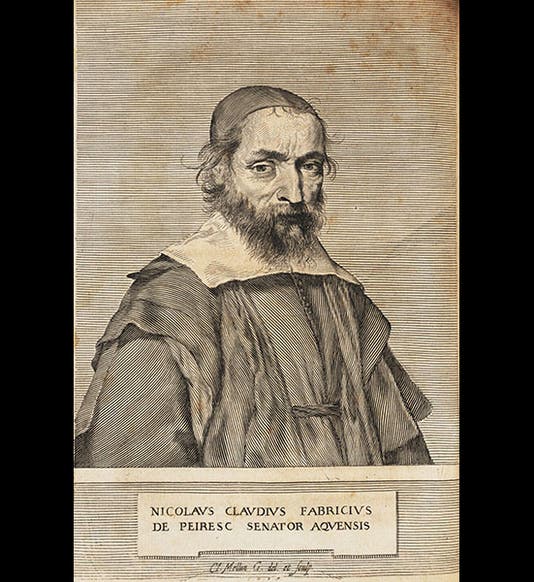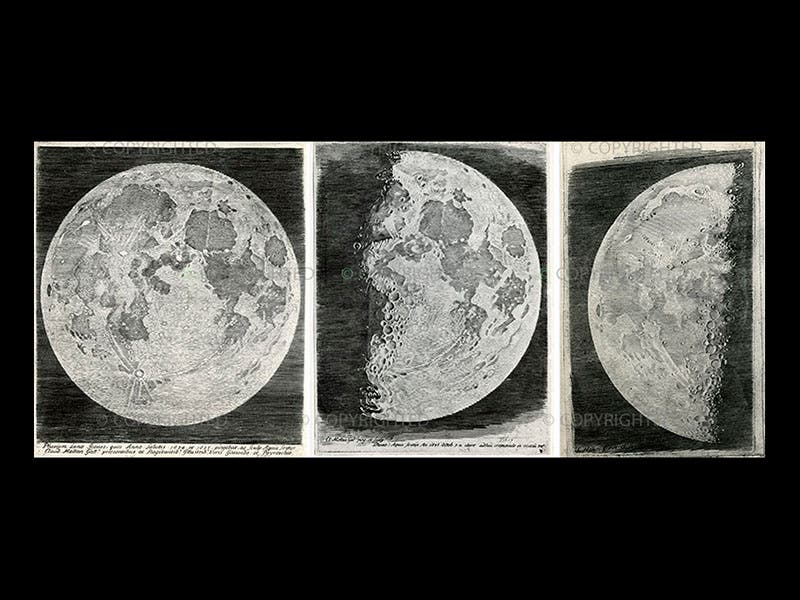Scientist of the Day - Nicolas Claude Fabri de Peiresc
Nicolas Claude Fabri de Peiresc, a French lawyer, humanist, and amateur astronomer, was born Dec. 1, 1580. Peiresc was viewed by his contemporaries as the Prince of Letters, a man learned in all manner of knowledge, as well as a collector, an antiquarian, and a master gardener. When Galileo was charged with heresy by the Church in 1633, it was Peiresc to whom his countrymen turned to intercede on Galileo's behalf, and Peiresc did so, writing several strong letters to Cardinal Barberini, the brother of Pope Urban VIII, protesting his treatment (the letters were of no avail, because the Pope wasn't listening to any criticism on this matter, even from his own family). Given his fame in the first third of the 17th century, it is surprising that, a century later, Peiresc was totally unknown, and only a recent revival in Peiresc studies has put him back on the map. The reason for his fall from renown is simple: he published nothing during his lifetime. He wrote thousands of letters, and kept voluminous notebooks on his various activities, but he did not commit anything to print. Fortunately, much of his correspondence survived, and was printed in the late 19th century, so we are able these days to give him a better assessment.
We know, for example, that Peiresc was an eager astronomer for much of his life. Peiresc actually studied under Galileo in Padua around 1600, and when Galileo published his Sidereus nuncius in 1610 and showed what a telescope could reveal about the heavens, Peiresc persuaded his patron, Guillaume du Vair, the President of the Parlement of Provence, to acquire a telescope. Peiresc not only confirmed Galileo's discoveries of the four moons of Jupiter, but he found, when looking at the stars of Orion, something that Galileo had missed: one of the stars in the sword of Orion is actually a nebula. We know Galileo studied Orion, because there is a map of Orion's stars in the Sidereus, but he did not notice the nebula. Peiresc was thus the first to observe what we now call the Great Nebula of Orion. In this modern photo of the lower half of the constellation, the nebula stands out as a cloudy spot near the bottom of the image (second image).
Peiresc lived in Paris for seven years, serving his patron du Vair, and there he met Marin Mersenne and Pierre Gassendi, two of the great natural philosophers of the early Scientific Revolution. When Peiresc moved back to Aix-en-Provence in 1623 after the death of du Vair, he remained in close touch with Gassendi, who had a canonry at nearby Digne, and in 1634, Gassendi actually moved into Peiresc's house and remained there until Peiresc’s death in 1637. There they acquired a better telescope and embarked on a program to map the moon. Unfortunately, neither was much of an artist, so they were delighted in 1635 when Claude Mellan, a gifted draughtsman and engraver, stopped in Aix on his way back to Paris from Rome. He was pressed into service for the lunar mapping program, and he produced three drawings of the full, first-quarter, and third-quarter moon, which he engraved and printed. Only a few sets survive, and I had the opportunity to see one of those when I was in Digne for a conference many years ago, and they are without question the most graphically arresting images of the moon produced in the first two centuries of lunar cartography (third image). It is hard to know how much influence Peiresc had in the making of these maps, but one assumes he had some input. If nothing else, he was enough of a European attraction that Mellan made a special effort to drop in on his way back home to Paris, and that set everything in motion.
While in Aix, Mellan sketched a portrait in charcoal of Peiresc (the original is in the Hermitage in St. Petersburg), which was the basis for an engraving he executed for the frontispiece of Gassendi's Life of Peiresc (1641), which we have in our History of Science Collection (first image). The engraving utilizes Mellan’s unique style of swelling the engraved lines to produce darker tones instead of employing cross-hatching. He used the same technique on his lunar engravings.
We have a second portrait of Peiresc (fourth image) in Charles Perrault’s Les hommes illustres qui ont paru en France pendant ce siècle (1696-1700), a book that we often feature in this column, since it contains large engraved portraits of nearly every French natural philosopher of the 17th century.
Dr. William B. Ashworth, Jr., Consultant for the History of Science, Linda Hall Library and Associate Professor, Department of History, University of Missouri-Kansas City. Comments or corrections are welcome; please direct to ashworthw@umkc.edu.










